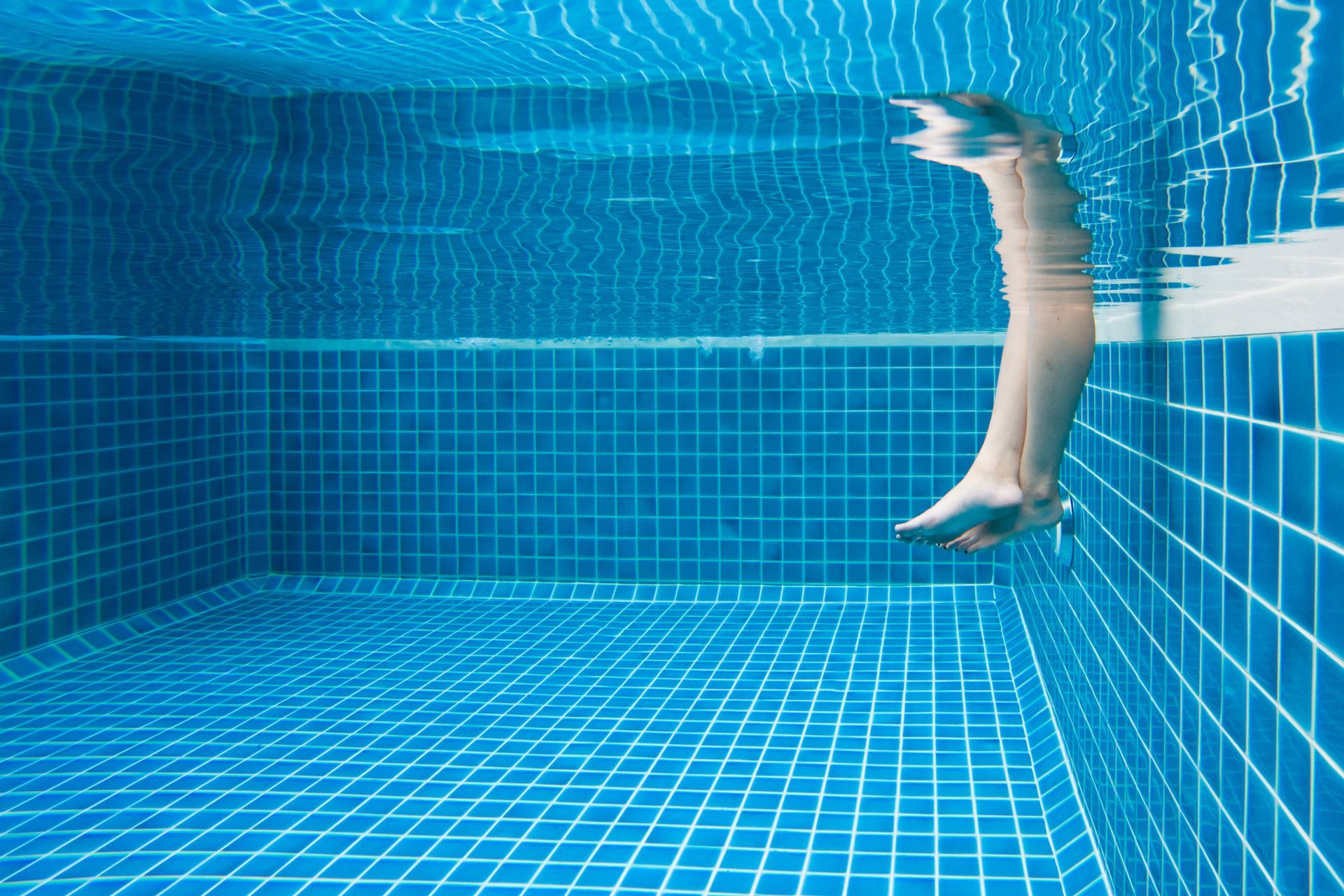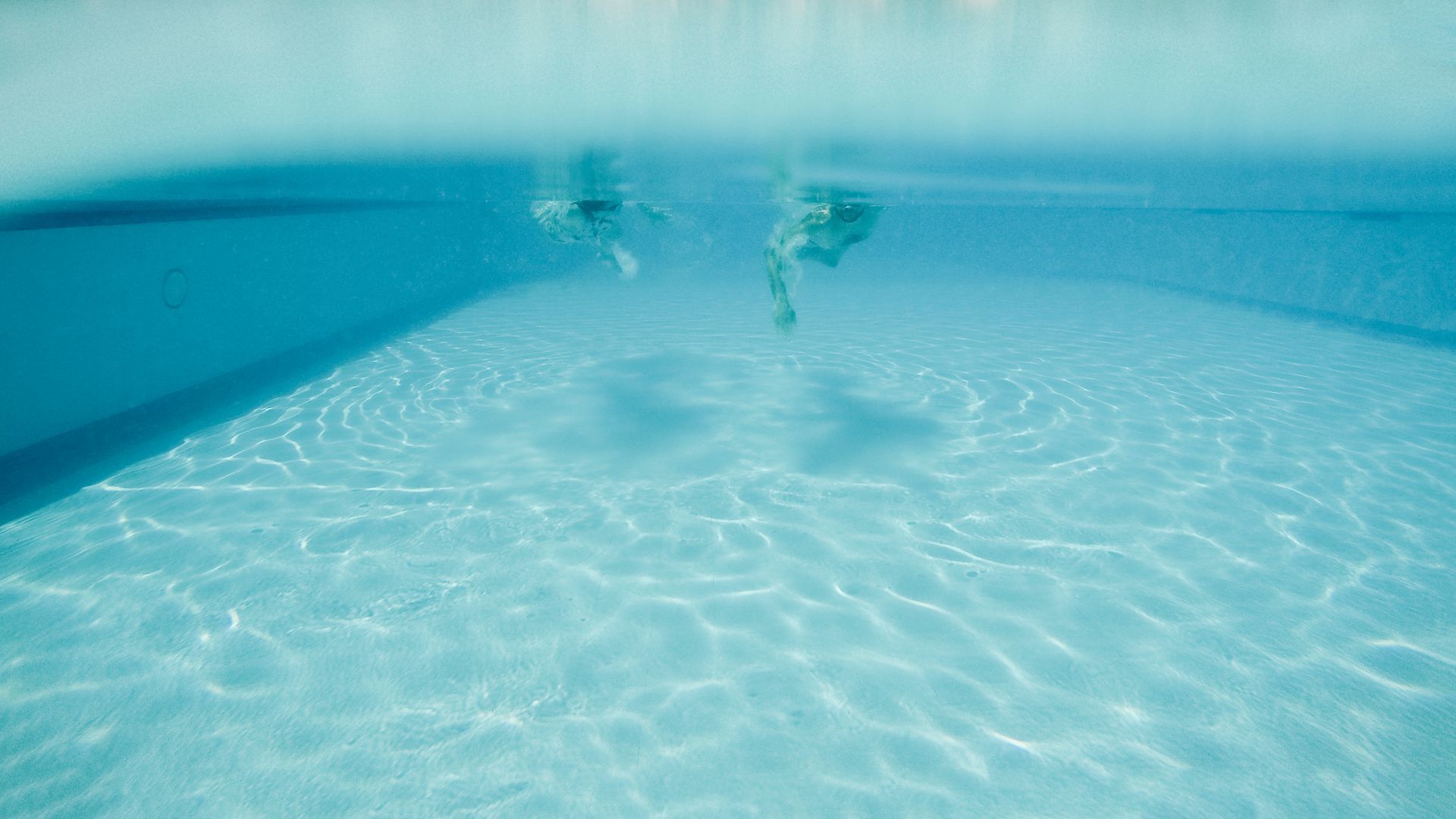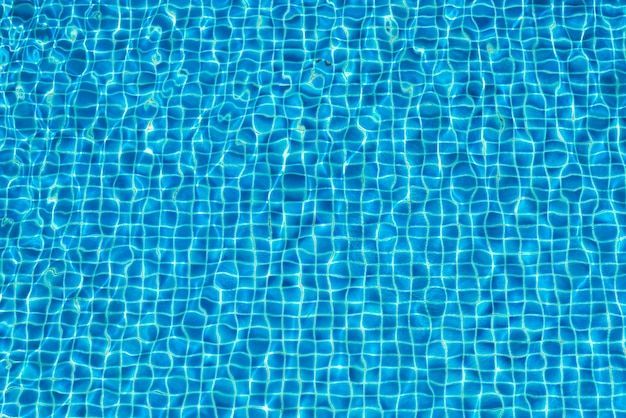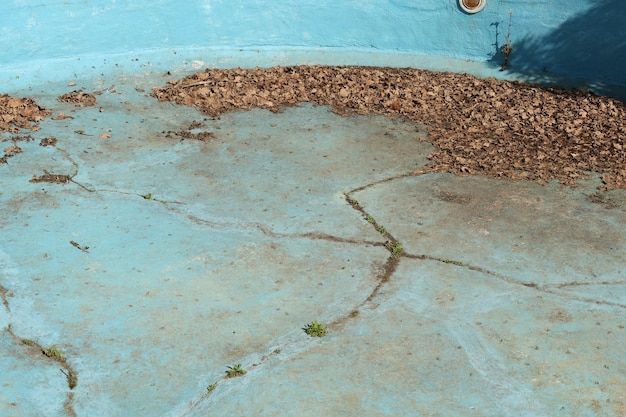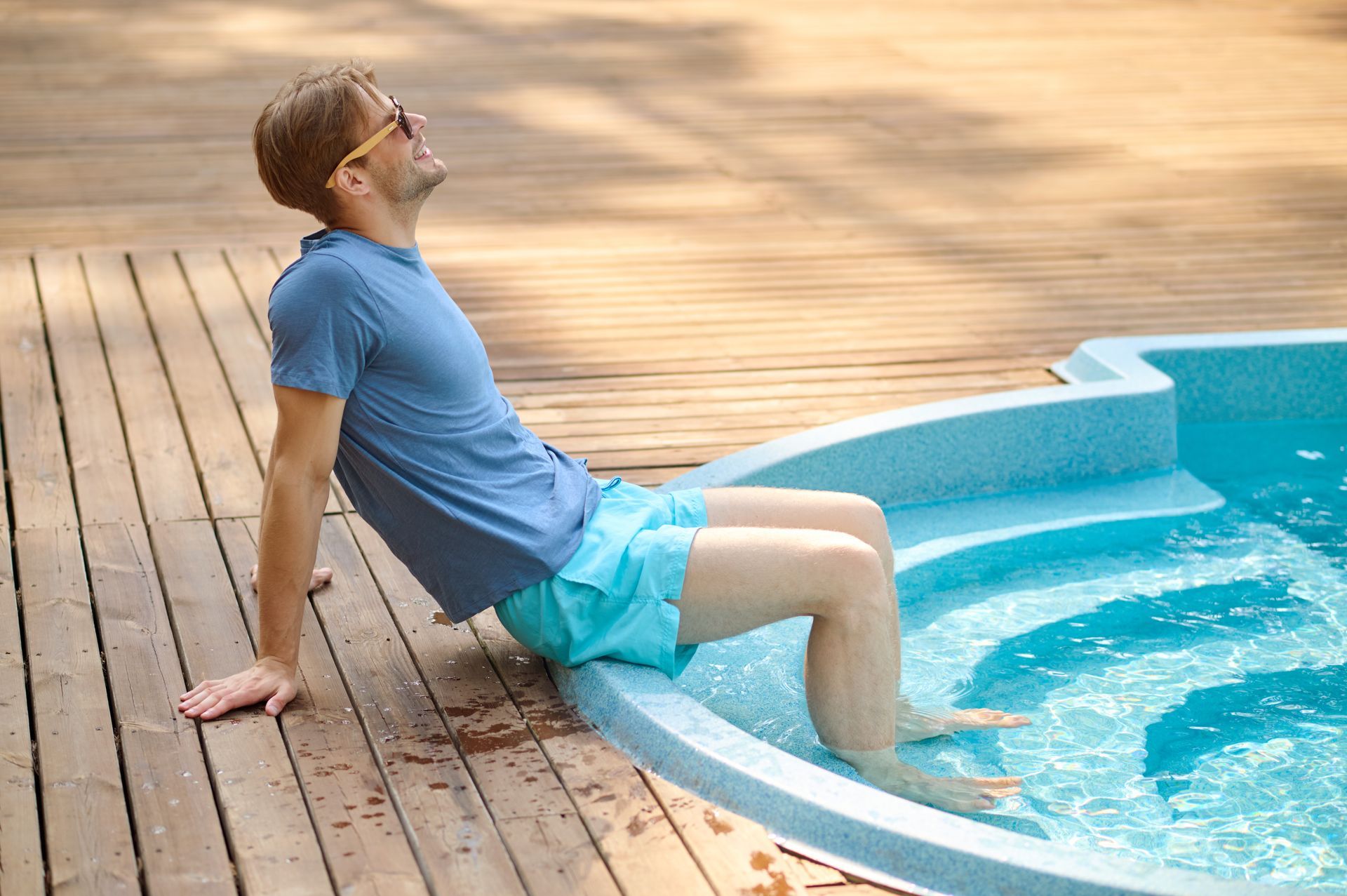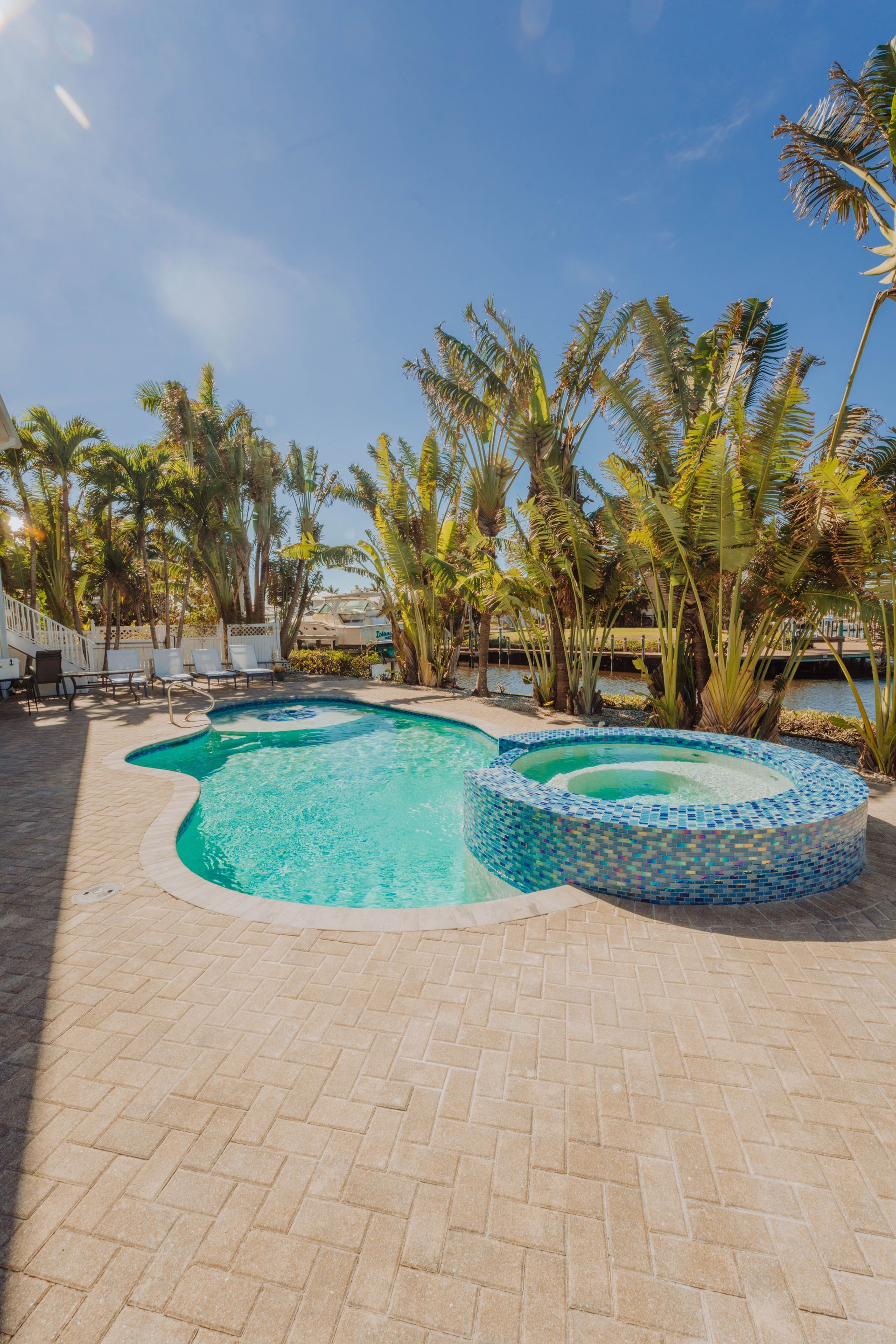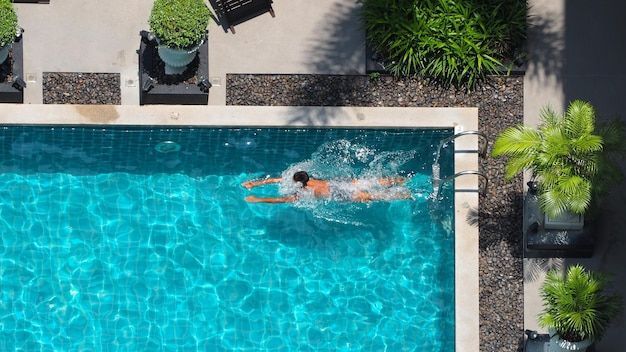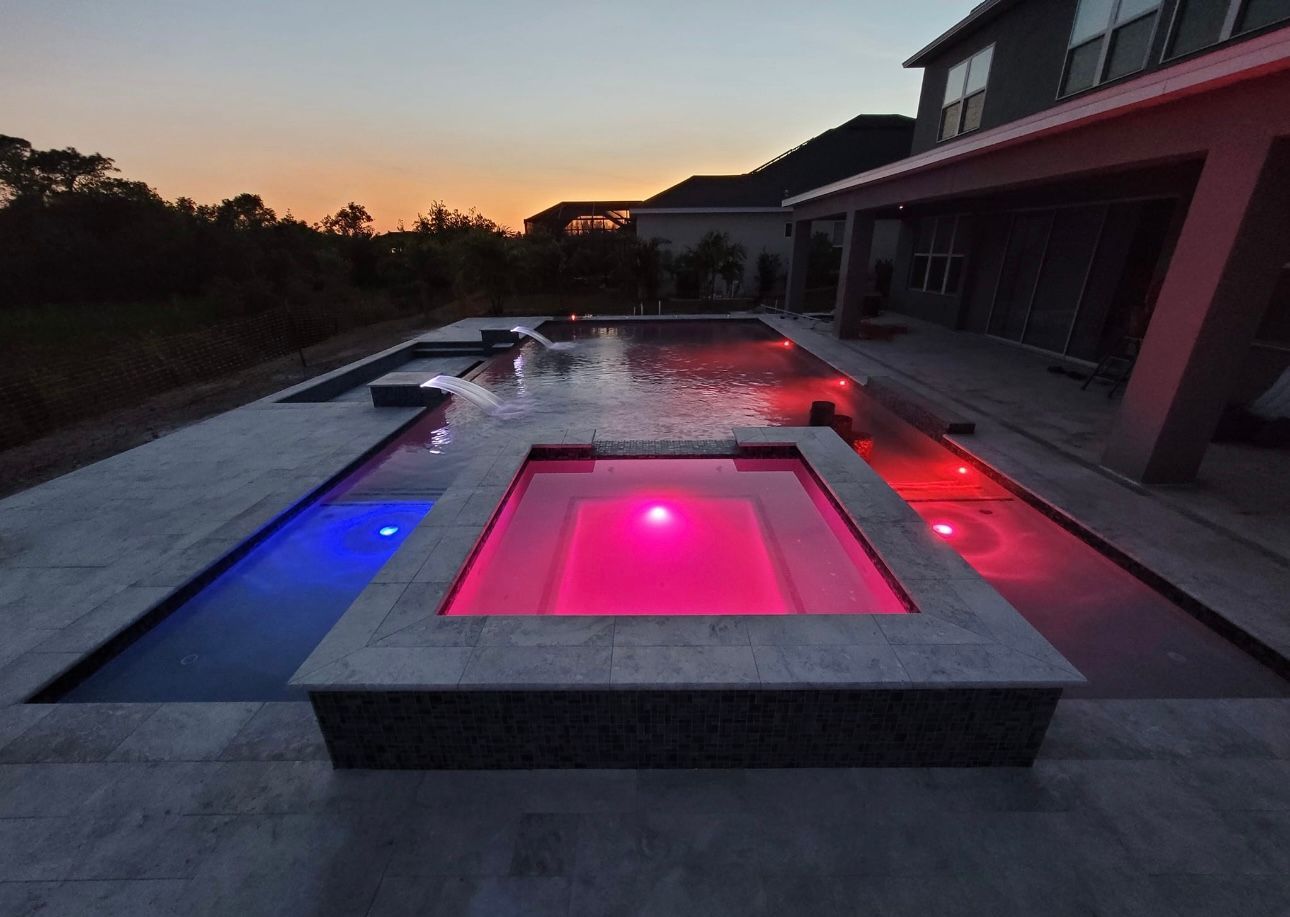HOW TO PREPARE YOUR POOL AND HOME FOR A HURRICANE
The decisions you make in the hours before the storm can mean the difference between minimal damage and costly repairs that could take weeks or months to complete.
At Gold Standard Pools, with years of experience in pool construction and renovation throughout Florida, we've helped countless homeowners prepare for and recover from major storms. We understand that during these critical moments, accurate information and proper preparation are essential. This comprehensive guide will walk you through the crucial steps needed to protect both your pool and your home from hurricane damage.
Why Proper Pool Preparation Matters
When a hurricane approaches, an improperly prepared pool can quickly become a source of significant problems and safety hazards. The combination of extreme winds, heavy rainfall, and flying debris can cause extensive damage to both your pool and surrounding property if proper precautions aren't taken.
1. Dangerous Projectiles: During hurricane-force winds, unsecured pool equipment such as pumps, cleaners, skimmers, and pool furniture can become dangerous projectiles. These items can be lifted and thrown by strong winds, potentially causing serious damage to your home or neighboring properties.
2. Contaminated Flood Water: Storm surge and heavy rainfall can introduce contaminated water into your pool, overwhelming its chemical balance and filtration system. This contamination can damage expensive equipment, stain pool surfaces, and create unsafe swimming conditions that require costly treatments to resolve.
3. Structural Issues: Improper water levels during a hurricane can lead to serious structural problems. If the water level is too low, hydrostatic pressure can cause the pool to lift or crack. Overflow can erode the surrounding soil and potentially damage the deck or nearby structures.
4. Debris Damage: Flying debris during a hurricane can scratch or crack pool surfaces, clog filtration systems, and damage essential equipment. Tree branches, yard furniture, and other items can cause extensive and costly damage to your pool's finish and mechanical components.
Essential Pool Preparation Steps
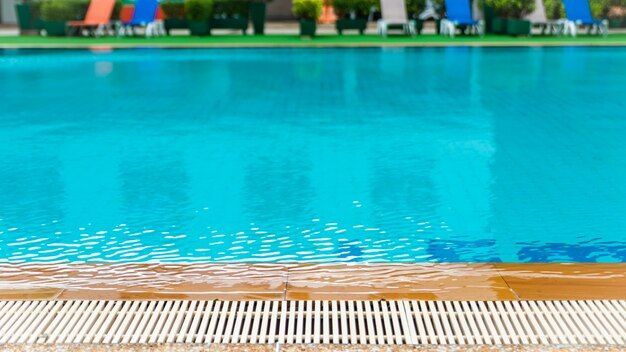
Do NOT Drain Your Pool
It’s essential NOT TO DRAIN your pool before a hurricane. Here’s why:
- Maintain the pool’s water at its standard level. The water provides weight and stability to the structure, which is especially important when high winds and heavy rain impact the area.
- The water’s weight helps keep the pool in the ground and prevents it from popping out due to underground water pressure, especially if the ground becomes saturated. Draining the pool removes this protective weight and leaves the structure vulnerable to damage.
- If there’s a risk of extreme flooding, you may lower the water level slightly (12-18 inches) below the deck. This provides some capacity for heavy rainfall, reducing the risk of overflow, but still keeps enough water in the pool to maintain structural integrity.
Protect Pool Equipment
To safeguard your pool equipment from the damaging effects of a hurricane, take the following precautions:
- Before the storm hits, shut off the power to your pool pump, heater, and any other electrical components to prevent potential electrical damage during power surges or flooding.
- If you can, disconnect and store the pool pump in a safe indoor location. If removal is not feasible, wrap the pump in heavy-duty waterproof material and tie it down to prevent water damage and displacement by strong winds.
- Unplug and store automatic pool cleaners indoors to protect them from storm debris and potential damage caused by heavy rain or flooding.
- Take off any removable items such as diving boards and ladders to prevent them from becoming airborne hazards or suffering damage from strong winds.
- Bring all loose items, including pool toys, cleaning tools, pool chemicals, and accessories, inside. Leaving them outside can turn them into projectiles during a hurricane or expose them to water damage.
Chemical Treatment
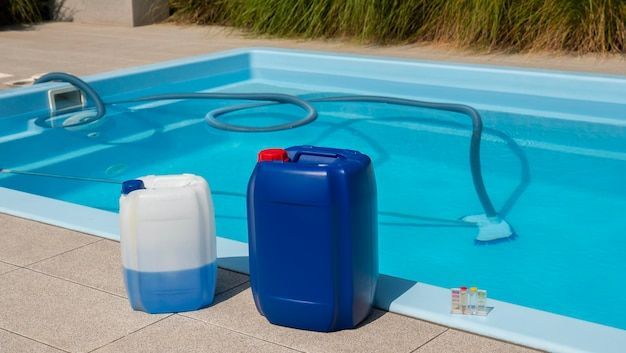
Proper chemical treatment is essential to maintain your pool’s sanitation before a hurricane. Follow these steps to protect the water quality:
- Before the storm arrives, super-chlorinate (shock) the pool to raise the chlorine levels. This will help combat contaminants that may enter the water during the hurricane, such as dirt, debris, and bacteria.
- Ensure that the pool’s pH is balanced, aiming for a pH level between 7.2 and 7.6. Balanced pH levels will help the chlorine remain effective in maintaining clean water and preventing algae growth after the storm.
- Adding additional chlorine tablets or liquid chlorine will help maintain proper sanitation in the pool water throughout the storm, especially if heavy rain or flooding introduces impurities.
- Move all pool chemicals indoors to a dry, secure location that is above any expected flood levels. Pool chemicals are sensitive to moisture and should be stored away from potential water damage to avoid dangerous reactions.
Protect the Surrounding Area
In addition to securing your pool, it’s crucial to protect the surrounding area to minimize damage and reduce hazards during a hurricane.
- Bring all outdoor furniture, umbrellas, and decor inside to prevent them from becoming dangerous projectiles in high winds. If items can’t be moved indoors, securely tie them down with strong, weatherproof straps.
- Prune trees and remove any loose branches or dead limbs that could be torn off by strong winds. Falling branches can cause significant damage to your pool, equipment, or surrounding property.
- Sweep and clear any debris from the pool deck, patios, and surrounding areas to prevent blockages in drains. Ensuring that drainage systems are free from obstructions will help avoid flooding and water buildup around your pool and home.
- If possible, install hurricane shutters or sturdy covers to protect exposed pool equipment, such as pumps, heaters, or filtration systems. This additional layer of protection can help shield the equipment from wind, rain, and flying debris.
Home Protection Measures
Secure All Openings
To protect your home from storm damage, it’s important to secure all openings where wind or water could enter
Install Hurricane Shutters or Plywood Over Windows
Cover all windows with hurricane shutters to protect them from flying debris. If hurricane shutters are not available, securely fasten plywood over the windows, ensuring they are strong enough to withstand high winds.
Reinforce Garage Doors
Garage doors are vulnerable to high winds and can be a weak point in your home’s defenses. Reinforce the garage door with braces or a hurricane-rated kit to prevent it from buckling or being blown in by the storm.
Seal All Doors and Entry Points
Check all exterior doors to ensure they are tightly sealed and weather-stripped. Apply caulking or other waterproofing materials around doors, windows, and any other entry points to prevent water from seeping inside.
Clear the Yard
Clearing your yard of potential hazards is crucial to prevent damage to your home and surroundings during a hurricane. Here’s what to do:
- Bring patio furniture, umbrellas, and any outdoor decor indoors to prevent them from being picked up by strong winds and causing damage.
- Ensure garbage cans, recycling bins, and any outdoor storage containers are securely fastened or moved inside. Loose bins can become dangerous projectiles during the storm.
- Put away garden tools, lawnmowers, and other outdoor equipment in a secure location, such as a garage or shed. These items can be hazardous if left outside in high winds.
- Bring potted plants indoors or securely anchor them to prevent them from being knocked over or blown away. This will reduce potential debris and damage to your proper
- By thoroughly clearing your yard, you can minimize flying debris and protect your property from the destructive effects of the hurricane.
Document Everything
- Take photos of your property, including the pool area
- Document all valuable items
- Store important documents in a waterproof container
After the Hurricane
Once the storm passes, you'll need to:
1. Wait for official all-clear before inspecting property
2. Document any damage for insurance purposes
3. Do not use pool until properly cleaned and balanced
4. Have professionals inspect pool equipment before restarting
At Gold Standard Pools, we offer:
- Pre-hurricane pool preparation services
- Post-storm cleanup and recovery
- Professional damage assessment
- Equipment repair and replacement
- Water quality restoration
As you prepare for the impact of a hurricane, taking the right steps to protect your pool and home is essential for minimizing damage. If you need assistance with pool maintenance, securing your property, or have any questions about hurricane preparedness, don’t hesitate to reach out to us. Our team is here to help with all your needs, ensuring your pool and home are ready for the storm. Contact us today for expert advice and support in safeguarding your property.
